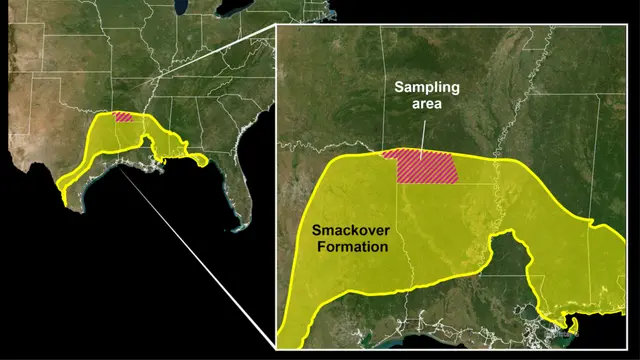In a remarkable discovery, the U.S. Geological Survey (USGS) has identified a massive lithium reserve beneath the southwestern region of Arkansas, nestled within a geological structure known as the Smackover Formation.
This revelation could dramatically transform the U.S.’s position in the global lithium market, which is crucial for electric vehicle (EV) battery production.

The Smackover Formation, a remnant of a Jurassic-era sea, is a vast limestone geological unit that extends beneath parts of Arkansas, Louisiana, Texas, Alabama, Mississippi, and Florida.
This region has long been known for its rich deposits of oil and bromine but has recently gained attention for its potential lithium deposits.
The extensive research, conducted in cooperation with the Arkansas Department of Energy and Environment’s Office of the State Geologist, utilized advanced machine learning techniques to predict lithium presence within this geological formation.
This innovative approach has produced the first-ever estimate of total lithium reserves in the Smackover Formation brines in Arkansas, suggesting an astounding 5 to 19 million tons of lithium within the region.
Such an immense supply could drastically curtail the United States’ dependency on lithium imports.
With lithium being a vital mineral for the production of electric and hybrid vehicles, its demand has surged as the world pivots away from fossil fuels.
The USGS estimates that the lithium reserves in Arkansas are more than sufficient to meet U.S. consumption rates, with a conservative figure of 5 million tons exceeding the projected global demand for EV batteries by 2030.
Katherine Knierim, the principal researcher of the study, cautioned that the figures represent an in-place assessment.
While promising, these estimates do not yet account for the feasibility of technically extracting the lithium using newer methods targeted at brine resources.
Nonetheless, this potential supply could meet the projected world demand for lithium in car batteries nine times over, potentially powering electric vehicles globally for up to six years.
This discovery not only underscores the growing importance of lithium in energy technology but also highlights a domestic opportunity to enhance supply chain resilience and stimulate job creation within the U.S.
Given that the U.S. is currently reliant on imports from countries such as Argentina, Chile, and China for over a quarter of its lithium supply, this new find represents a significant breakthrough.
The Smackover Formation, historically significant for its oil and bromine extraction, now positions the U.S. to potentially surpass countries like China in lithium reserves, should this discovery be commercially viable.
With the ultimate goal of markedly reducing the nation’s import reliance, this research opens up new frontiers in resource utilization from what has traditionally been considered waste streams.
Published in Science Advances, this study not only exemplifies the possibilities unlocked through collaborative scientific research but also sets a promising precedent for future energy resource exploration and management.
